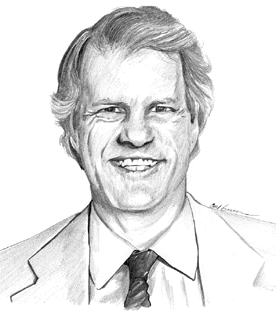INTERVIEW
by Thom Hartle

How did you start out in the business?
I was an options broker back in 1984 to 1987 for a commission house. Unfortunately, I had the same experience that many people complain about in commodities -- that there were two parties that made money on every transaction, one being the brokerage and the other being the broker. It was rare that the client was a winner. During that same period, I heard about managed futures, and an acquaintance started doing research on the industry. His findings went against all the conventional thinking that I had heard about the futures industry.
And that was?
That everybody loses money.
So what did your friend's findings point to?
That there was a field of experts with very impressive long-term documented track records earning consistent returns. In fact, they had methods for controlling the volatility in a way that was favorable or parallel to stocks and mutual funds.
What happened next?
I went to work for another firm, but I continued to hear from investors who said they were not like other investors, who were trying to hit a home run in the futures markets.
What did they want?
These investors said that they just wanted to earn consistent returns. That gave me the idea to track and rate commodity trading advisors according to consistency.
So you started your own firm to work with clients interested in having a commodity trading advisor (CTA) manage a portion of their money?
Right. We started CTA Research Corp. in 1991. I had come up with the idea of creating an index that would measure to what degree money managers were consistent in producing a reward-to-risk profile. That was the genesis of my whole approach.
And you created that index. Tell us about it.
My approach was actually quite simple. First, I want to point out that one of the things that leads to disillusionment in any type of investment is if you were to look at the average rate of return over a three-year period, it's based on calendar years.
True enough.
But calendar years are really arbitrary snapshots. It is the standard in the industry, even in the mutual fund industry. When anyone discusses returns they talk about the average rate of return for x number of calendar years. Right from the start, this approach can set a new investor up for disappointment.
Why?
Here's an extreme example. Let's say an advisor made 100% in year 1 and then made 3% or 4% in years 2 and 3. He might market his services by saying that his average rate of return was 33%. Somebody starts a program with that particular advisor and his or her return comes in at 4% or 5%. The common reaction is the investor concluding that whenever he or she starts an investment, he never makes money. Such investors often end up thinking that they are the kiss of death as far as investments go.
Too much knowledge is a dangerous thing if you draw the wrong conclusions, or if it's just so overwhelming that you can't sort it out. But I think that's a rationalization.